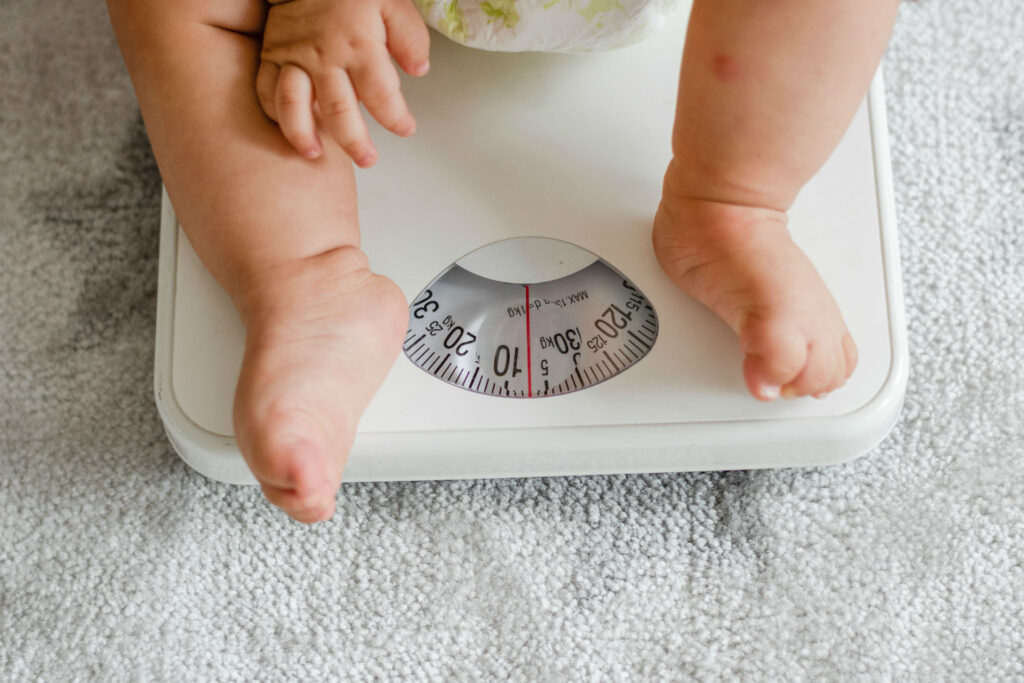Parents only want what’s best for their babies. That is why more and more mothers choose to breastfeed their newborns. As a mother, you must observe if your baby is getting enough milk during the initial stages of breastfeeding.
Generally, your healthcare provider will give you feeding guidelines. You can try weighted feeds with your baby to ensure that he’s getting the right amount. For this, you need the best baby scales that offer accurate readings and efficiency.

How To Weigh Baby for Feeding
Weighted feeding is easier to do at home if you have a digital baby scale that can measure in grams. Here are the specific steps leading to a weighted feeding of your baby:
Before Feeding
- Change your baby’s diaper into a clean one as needed.
- Put a clean blanket on the weighing scale.
- Turn on the scale and set the reading to zero so that it’s not weighing the blanket.
- Place the baby on top of the blanket.
- Record the baby’s weight in grams.
- Lift the baby from the scale and start feeding.
After Feeding
- After the baby has finished feeding, it’s time to weigh him again.
- Turn on the weighing scale and set it to zero.
- Lay the baby on top of the blanket on the scale.
- Note the weight reading in grams.
- Compare the results before and after feeding.
- Calculate how much milk the baby drank by subtracting his weight before feeding from his weight after.
- As a guide, a gram of weight is equivalent to one milliliter, or 30 grams equals one ounce.
Is My Baby Getting Enough Milk?
Ensuring that your newborn baby is drinking enough milk during his first few days up to a week is crucial to his proper development. There are several ways to tell whether your baby is getting enough milk from your breast every feeding.
You can see it in the way he sucks, the amount, color, and the number of wet and dirty diapers in a day, and if he is gaining weight. Let’s check each one thoroughly.
The Way He Sucks While Feeding
His lips must be open wide with turned-out lips while sucking. In the beginning, he should be doing short and rapid sucking movements for a minute or two until milk comes out from your breast.
The sucking slows as your baby starts to take milk from your breast. While he’s drinking, his mouth is wide open. He will then pause before closing his mouth. You should also hear swallowing sounds, ensuring he’s getting milk.
His Bowel Movements
The baby’s poo color during his first week after birth is also a suitable indicator if he’s getting sufficient colostrum or the first breast milk. In his first two days, he will pass meconium, a sticky, dark, and greenish-black poop. Colostrum will help get rid of meconium. So, you can breastfeed him as often as he likes, expecting him to have one to two bowel movements during this time.
Your baby must have received enough colostrum on the third day, passing out a lighter, greenish-brown poop. From this day on up to four weeks, he should be passing about two tablespoons of poop at least twice a day.
As you produce more milk from the fourth day onwards, the poo becomes yellow with a pasty, runny, or seedy texture. Then, after the initial four weeks, his bowel movement pattern may change to at least three a day. If he’s breastfeeding well, his stomach is soft.
His Urine
His urine should be clear, pale yellow, without a smell when drinking breast milk. Try feeding him every two hours if you notice pink spots in his pee. Typically, his diaper will get heavier as each day passes. As he reaches his first week, he should be peeing a lot and may need six to eight diaper changes in a day.
His Overall Appearance
Doctors follow a standard growth chart for babies. They will monitor his progress two days after leaving the hospital, after a week, and every week after that.
Because breast milk digests quickly, your baby gets hungry faster. In 24 hours, he should feed eight to 12 times for 15 to 45 minutes per feeding. He should be alert, cry aloud, and with a wet mouth.
Weighing Your Baby
Test weighing is an excellent method of knowing the amount of milk your baby gets for each feeding. This information is vital to your child’s growth and development.
Typically, test weighing a baby is done in the hospital so that the doctor can monitor your child’s progress until you go home. Your pediatrician may ask you to keep track of the baby’s milk consumption and weight gain at home if he is low on both aspects.
Babies on exclusive breastfeeding show signs of weight gain and an increase in height. If you don’t notice any of these attributes or feel that you have a low breast milk supply, consult your baby’s doctor or specialist.


